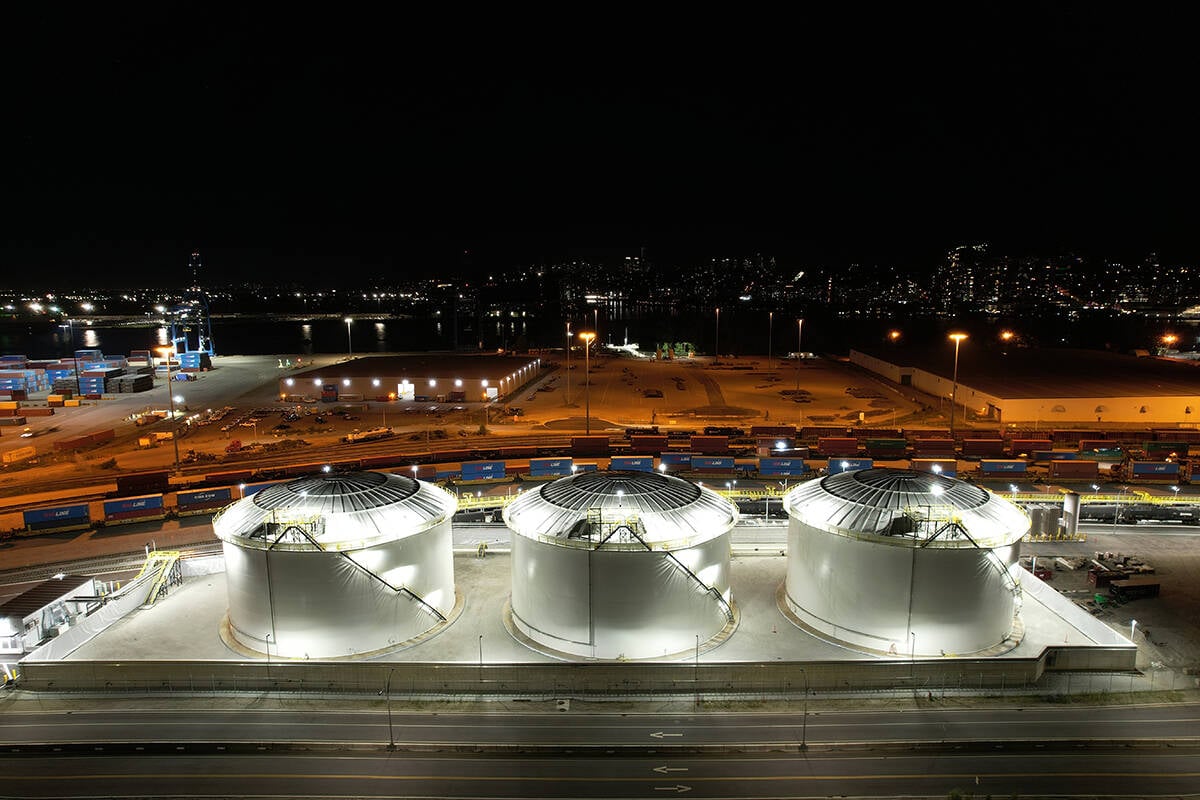Michelangelo used a hammer and a chisel to craft his masterpieces. Winnipeg artist Doug Lewis has opted for different tools, using tongues and urine to fashion his modern sculptures.
The differences don’t stop there. Instead of stone or marble, he picked salt licks as the medium for his artistic expression, an inspiration derived from a childhood spent on a hobby farm north of Winnipeg.
“I got bored of being in the studio and I wanted to investigate things outside,” said Lewis, whose 80 sculpted salt licks are on display at Saskatoon’s Mendel Art Gallery until May 25.
Read Also

Canola oil transloading facility opens
DP World just opened its new canola oil transload facility at the Port of Vancouver. It can ship one million tonnes of the commodity per year.
Half of the works of art were a collaborative effort. Lewis placed the salt blocks in strategic locations on Winnipeg-area ranches, visiting the farms every week or so to rotate the blocks in such a way that the cows and horses would create the patterns he was looking for.
“There was a real sense of play there because rather than a lot of thinking, it became just like mark making. It became almost a childlike experience,” he said.
“It was absolutely the most fun I’ve ever had.”
The second half of the project required more thinking. He had to figure out a way to contribute something on his own to contrast what the animals had done.
One hot mid-June day as he was carrying the salt licks up to his studio Lewis had a revelation. Tasting the sweat trickling over his top lip, the artist realized there was a strong link between salt and bodily fluids.
It was then and there that Lewis decided he wouldn’t use his hands to carve out this particular creation.
Instead he relied on things like a pressure washer, hydrochloric acid and urine to erode the salt in a manner similar to a cow’s tongue.
“The piece became a real contrast between what I could do hands off and what they could do tongue on,” said Lewis.
He also incorporated a shotgun and .303 and .22-calibre guns in the creative process, punching holes into and blasting away chunks of the salt blocks.
“The piece became so much about life and death because salt sustains our living,” explained Lewis.
It took two years of working with tongues, bodily fluids and bullets to sculpt one tonne of salt into works of art he was happy with.
He used white, blue, brown and clay coloured salt blocks to add contrast to the display. There is also variety in shapes and sizes.
One is layered like a Japanese pagoda, another looks like waves clashing in a violent sea.
Some simply look like giant rectangular candles with holes in the top where fire has burnt away the wax. Others are complicated sculptures incorporating salty stalagmites or wormholes carved in the side of an otherwise flat surface.
With many pieces of art the larger it is, the higher the price it fetches. In this case it’s the opposite because the smaller objects took more time to create. His pieces range from $300-$600.
Although he has only sold one piece, the artist is thrilled with the reaction to his shows in Winnipeg and Saskatoon.
Contemporary art is often shunned or vilified by audiences that can’t understand what it means. Lewis feels some of those barriers can be broken down by using common objects as the subject matter.
This isn’t the first time he has used unusual materials for his contemporary art. A few years ago he did a study of sidewalks.
“I really like everyday things that you can stub your toe on,” said the Winnipeg artist.
Feedback from the recent opening of his Mendel exhibit reinforced his theory that using common material can draw people out of their shells when it comes to contemporary art.
“One person talked about when they lost the farm,” said Lewis.
“And another person talked about when they were children how their father used to give them heck when they licked the salt. So they’d do it secretly.”

















